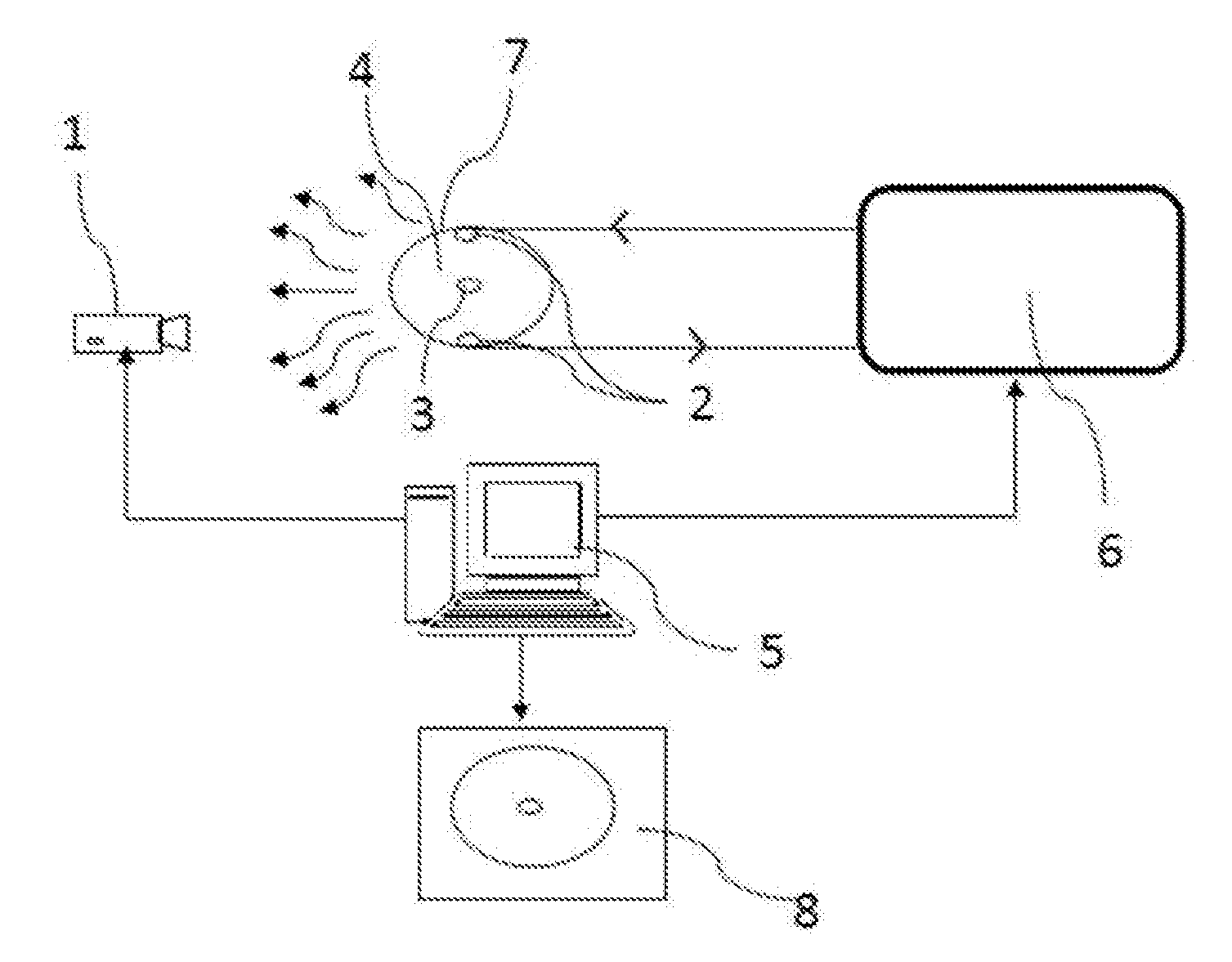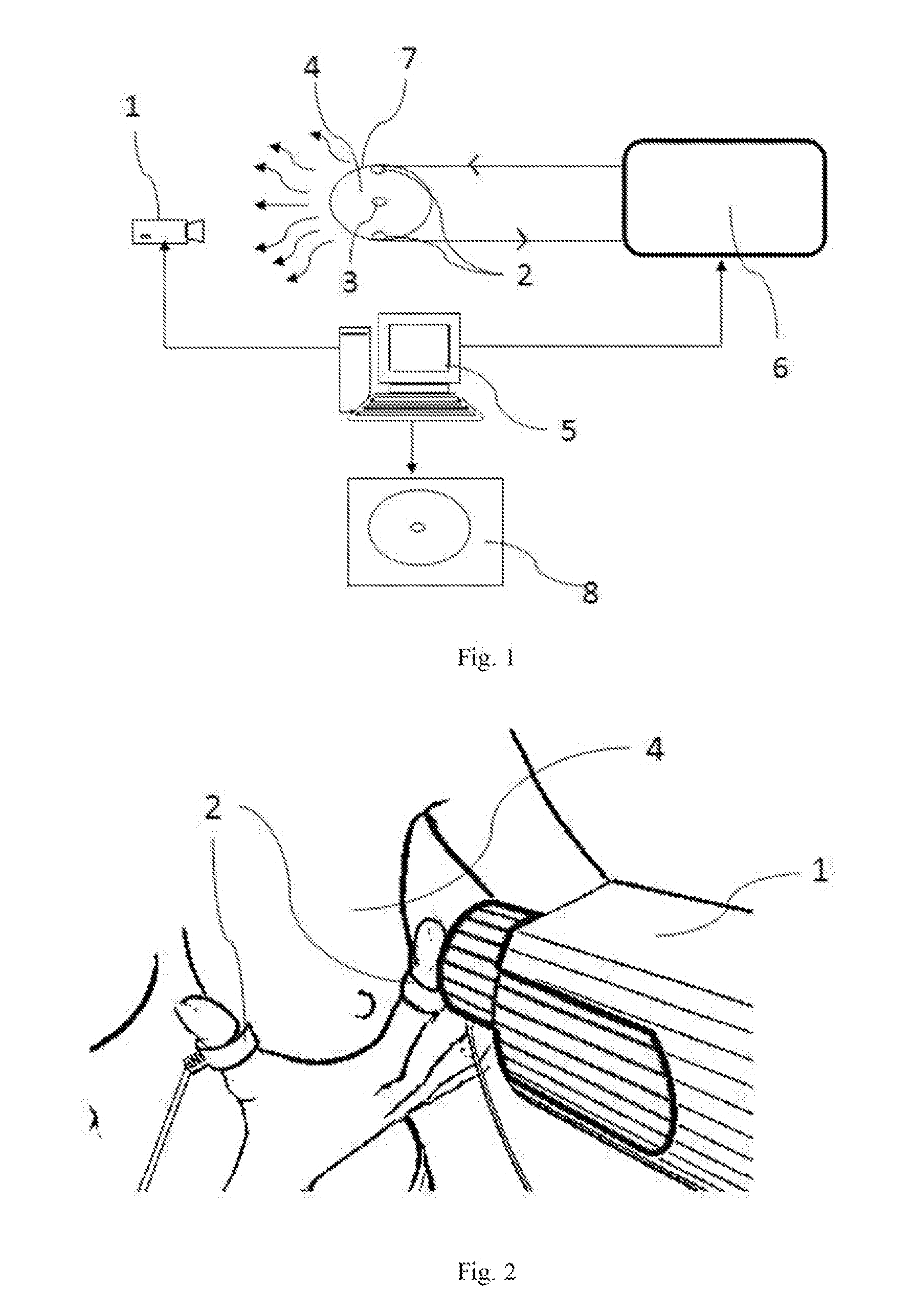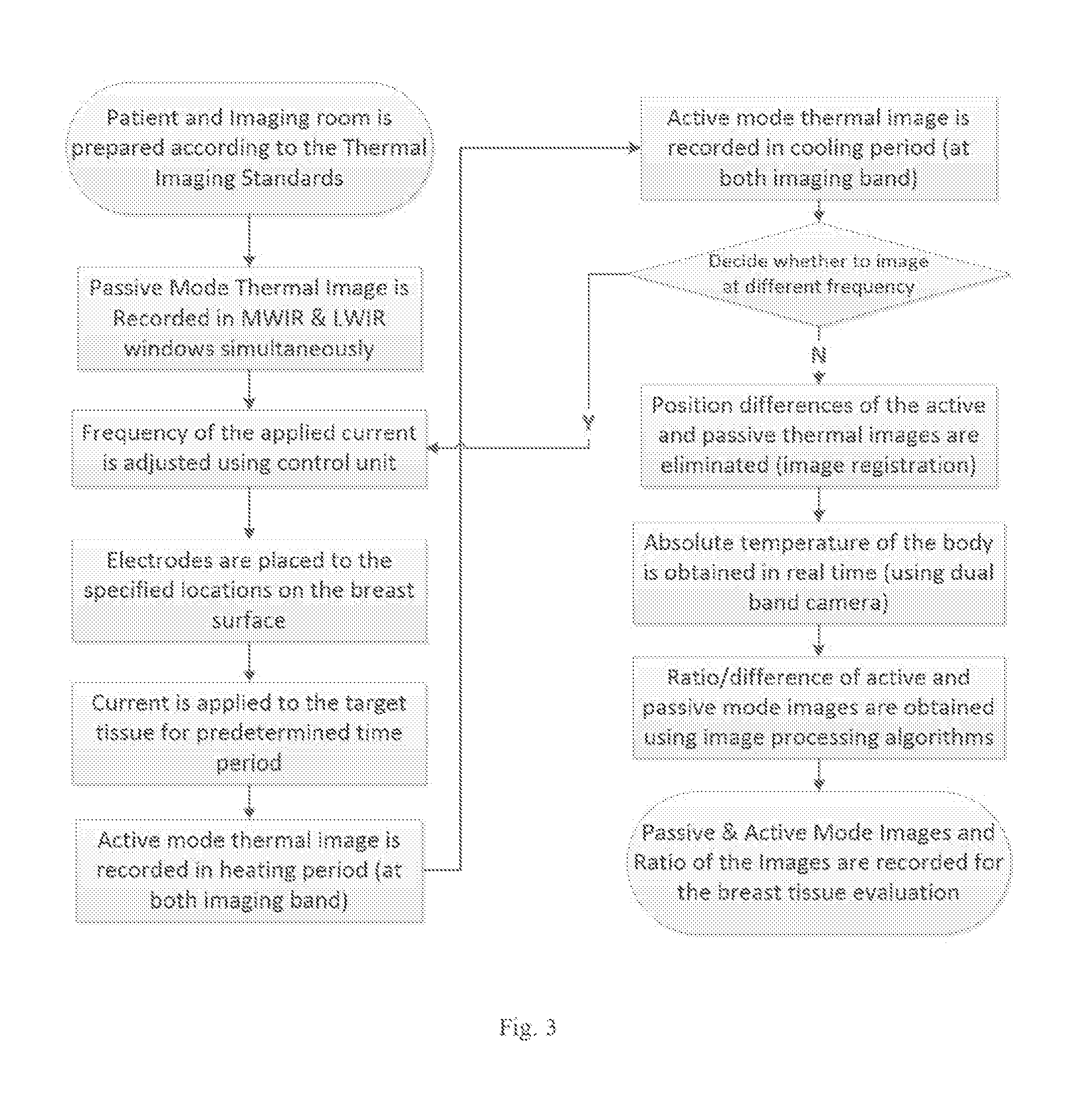Method and system for dual-band active thermal imaging using multi-frequency currents
a multi-frequency current and active thermal imaging technology, applied in the field of breast cancer diagnosis, can solve the problems of inaccurate results, inability to reliably sense the effect of this technique, and inability to comfort patients, so as to improve imaging performance, reduce individual drawbacks, and increase the sensitivity and specificity of eit
- Summary
- Abstract
- Description
- Claims
- Application Information
AI Technical Summary
Benefits of technology
Problems solved by technology
Method used
Image
Examples
Embodiment Construction
[0116]Theory
[0117]We present below the theoretical analysis of thermal contrast enhancement with current injection. Electromagnetic problem of the method is modeled and the schematic of the electromagnetic problem is shown in FIG. 4. The electrical model of the body is represented using permeability μ=μ0, electrical conductivity κ and permittivity ε. Sinusoidal currents are applied using two electrodes attached on the body surface at points A and B. Applied currents generate an electric field in the conductive body. The steady-state electric field {right arrow over (E)}=−jw{right arrow over (A)}−∇Ø can be calculated using the following coupled partial differential equations,
∇2{right arrow over (A)}−jwμ(κ+jwε){right arrow over (A)}−μ(κ+jwε)∇Ø=0
∇.[(κ+jwε)∇Ø]+∇(κ+jwε).jw{right arrow over (A)}=0
[0118]and boundary conditions
κ∂∅∂n={IonA-IonB0otherwise
[0119]where {right arrow over (A)} is the magnetic vector potential, Ø is the scalar potential, and I is the current applied from the surfac...
PUM
 Login to View More
Login to View More Abstract
Description
Claims
Application Information
 Login to View More
Login to View More - R&D
- Intellectual Property
- Life Sciences
- Materials
- Tech Scout
- Unparalleled Data Quality
- Higher Quality Content
- 60% Fewer Hallucinations
Browse by: Latest US Patents, China's latest patents, Technical Efficacy Thesaurus, Application Domain, Technology Topic, Popular Technical Reports.
© 2025 PatSnap. All rights reserved.Legal|Privacy policy|Modern Slavery Act Transparency Statement|Sitemap|About US| Contact US: help@patsnap.com



